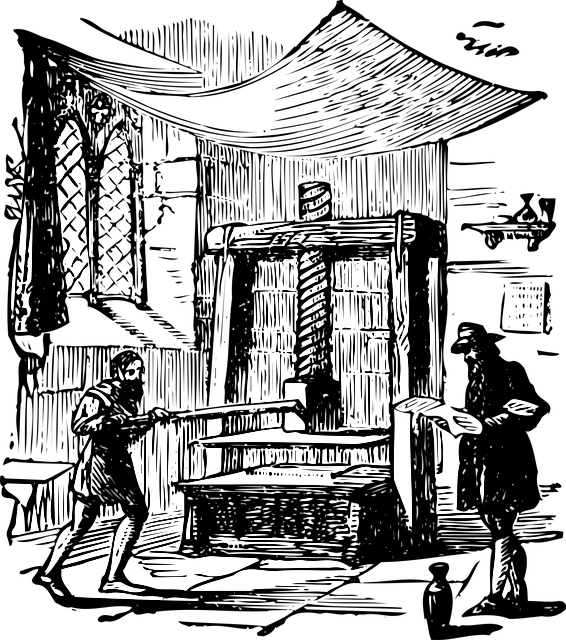The printing press, invented by Johannes Gutenberg in the 15th century, is widely seen as one of the most significant medieval inventions. By introducing movable type, Gutenberg revolutionized the way knowledge was shared and preserved. Books could now be produced quickly and cheaply, spreading literacy, education, and religious reform. The Gutenberg Press was the driving force behind the Renaissance and Reformation, laying the groundwork for the modern world.

Thanks to his printing press, it became possible to rapidly publish books and make them available to a greater number of people at a more modest price. Such possibilities brought classic and contemporary books and literature into the hands of a greater portion of society, ushering in what has been called the ‘printing revolution.
Printing Press History
Movable type printing was already in practice in Europe before Gutenberg’s invention in the 15th century. But the genius of Gutenberg lay in refining movable type printing and making it more efficient than ever before.
Gutenberg came up with the idea of the new type of printing press in 1440. In the next few years, he brought together the funds needed to set up his own press which became operational by 1450.
In 1452, Gutenberg undertook the first major printing project on his new press, that of printing the famous 42-line Bible. This publication effectively heralded the beginning of the printing revolution.

Gutenberg’s Invention
During the early 15th century, methods of printing books were already available. But the traditional printing techniques were slow, cumbersome, and highly expensive, making it virtually impossible to print books in bulk.
Gutenberg had an experience in metalwork, goldsmithing, gem-polishing, and later as a publisher and printer as well. It was drawing on his vast skill set that Gutenberg endeavored to create a printing press that was more rapid.

He did this by inventing a system where he could utilize the existing printing equipment in an all-new way. In doing so, he used a type of metal alloy, and for casting type, used hand mold. The molds he used were easily adjustable, the inks he utilized were far more durable and he used a movable type that was mechanical and easier to use.
The result was that his printing press was able to print colored copies of texts and books at a greater speed and lesser price.
Adoption in Europe
Europe was in the midst of the Renaissance when Gutenberg came up with his new printing press. His invention was immensely popular given the needs of the time and by the end of the 15th century, Italy alone had printing shops in 77 cities while printers utilizing the new press were operational in all parts of Europe.
By this time, these printers had already published 20 million texts, a publishing volume that was considered virtually impossible by the European printers only a few decades earlier.

Impact on Society
The invention of the printing press became a crucial factor that made Renaissance possible in Europe. It made it possible for classic texts as well as new ideas and books to be disseminated to a large part of society in no time.

It was largely thanks to this new mode of printing that Reformation in Protestant regions and Enlightenment in France subsequently became possible. The press also paved the path for entirely new fields of written text, such as newspapers.
Who invented the printing press in medieval Europe?
Johannes Gutenberg invented the movable-type printing press around 1440 in Mainz, Germany.
What was the first major book printed?
The Gutenberg Bible, printed around 1455, was the first major book produced using movable type.
How did the printing press change medieval society?
It made books more affordable, boosted literacy, and spread knowledge rapidly across Europe.
What was the impact of Gutenberg’s invention on religion and education?
It helped spark the Reformation and Renaissance by making religious texts and scholarly works widely accessible.
Learn More about Johannes Gutenberg and Medieval Printing Press at Wikipedia






